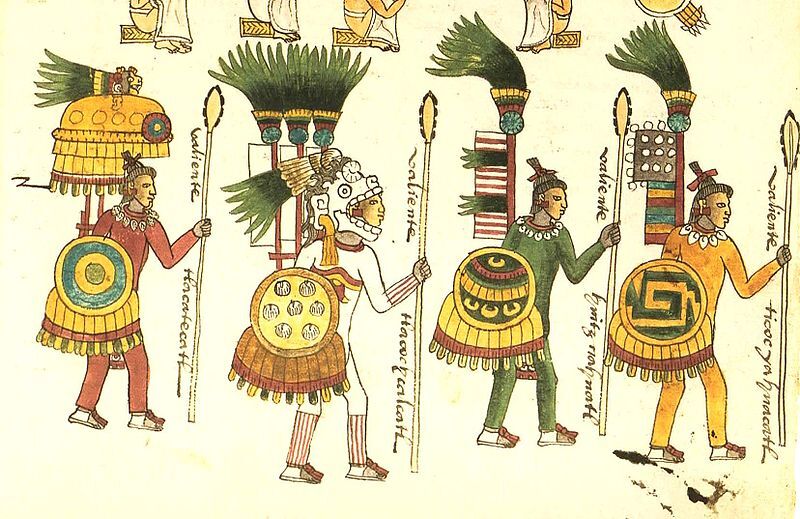The Aztec Empire maintained its supremacy by war or threat of war against its neighboring areas. Aztecs engaged in war for two primary reasons: for conquest to reap tribute or to take captives for religious sacrifices necessary to satisfy the gods. We’ll discuss the war for captives in another article. War, therefore, was a major part of Aztec society and successful Aztec warriors received high honors.
War was one of the few ways that commoners improve their social standing: successful warriors received many honors from the emperor, including land, rich clothing, insignia and the privileges and status of nobles for commoners.
Wars of Conquest
The Aztec Empire depended on tribute, trade and agriculture. The primary objective of most Aztec warfare was to subjugate other cities and lands to extract tribute. Everyone in Aztec society benefited from a successful battle or campaign. Captives of the war would be sacrificed to the gods, ensuring continued benevolence from the gods to the Aztecs.
When the Aztecs started to eye a land for conquest, they first asked the pochteca, the long-distance traders of the empire, to investigate the area and report on what they found. In this sense, the pochteca were invaluable to the emperor. The military intelligence conveyed by these merchants could enable successful campaigns, especially in lands distant from Tenochtitlan, the capital.
The next step was to send a formal ambassador to the area or city state. The emperor’s ambassador would first tell of the advantages of being a tributary member and ally of the Triple Alliance. If, after 20 days the city declined, the ambassadors returned with threats of what would happen if they continued to refuse. After a second refusal to become a tributary, the Aztec army marched.
Training
Every boy received military training at their schools, both telpochcalli and calmecac. The boys endured hard exercise to build up muscles and received military training as they grew. At the end of school, boys wanting to be warriors received further training in the army on the battlefield as weapon carriers and messengers.
Military Communication and Intelligence
The Aztec system of communication required regular messengers. The emperor established a group of well-trained runners every 2.5 miles throughout the empire. When a message went out from Tenochtitlan, runners could convey the information to the farthest flung outpost. Military commanders conveyed messages to allied cities regarding troops and provisions needed for the upcoming war.
Intelligence was gathered through the pochteca, ambassadors, messengers and spies. Some pochteca acted as spies, disguising themselves as the natives of the city to be conquered. This dangerous occupation won them much honor and respect in Aztec society.
Battle
When the attacking and defending forces sighted each other, the first weapons used were projected weapons—atlatls or dart throwers, slings, spears and bow and arrows. When the armies closed into melee, razor-sharp obsidian clubs, swords and daggers were used. When the Aztecs won, they would take defeated warriors, women and children as slaves or sacrifices. The city itself was left alone, but the temple was burned or razed. The local leaders would be left in charge, but heavy tribute had to be paid. As Aztecs were fierce warriors, the threat of war was often enough to cause other Mesoamerican cities to surrender.
This article is part of our larger resource on Aztec civilization. For a comprehensive overview of the Aztec Empire, including its military, religion, and agriculture, click here.
Cite This Article
"Aztec Warriors Fighting for Conquest and Captives" History on the Net© 2000-2024, Salem Media.
April 10, 2024 <https://www.historyonthenet.com/aztec-warriors-fighting-for-conquest-and-captives>
More Citation Information.

